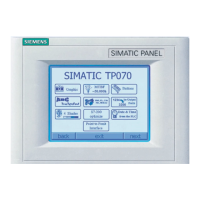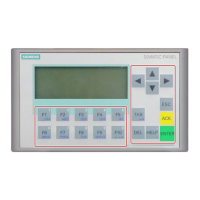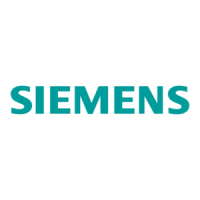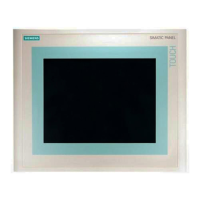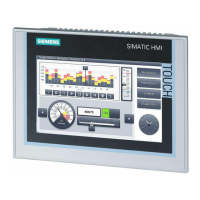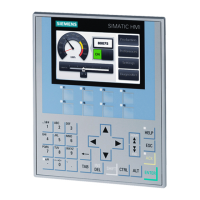3-1
TP27, TP37 Equipment Manual
Release 01/00
General Operation
Using the Touch Panel screen, it is possible to observe the operating status of
the machine or system being monitored and, at the same time, to intervene di-
rectly in the process running simply by touching the buttons and input fields
displayed.
Operation of the Touch Panels TP27 and TP37 is intuitive to a large extent,
because
S operating elements can be positioned where they belong, from a functional
point of view,
S labeling of visible buttons is dynamic; in other words, labeling can be
changed online, according to the language required, or
language–independent bitmaps can be assigned to the buttons, for example,
S any sections of the system or process screen are rendered operable by su-
perimposing invisible buttons
S virtual keys for cursor functions and value input only appear when they can
actually be used: In input windows.
A screen occupies the entire display. An example of screen partitioning on the
TP37 display containing several open windows is illustrated in figure 3-1. The
TP27-6 has a smaller display, so that the operating elements are cascaded
(overlap).
Main area
Fixed window
Local button
System messages
Event and alarm
messages
Global button
Numeric input
window
Help window
Light indica-
tors
Message indicators
Figure 3-1 Screen partitioning on the TP37 (example)
Operating concept
Screen partitioning
3
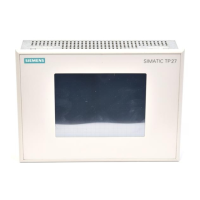
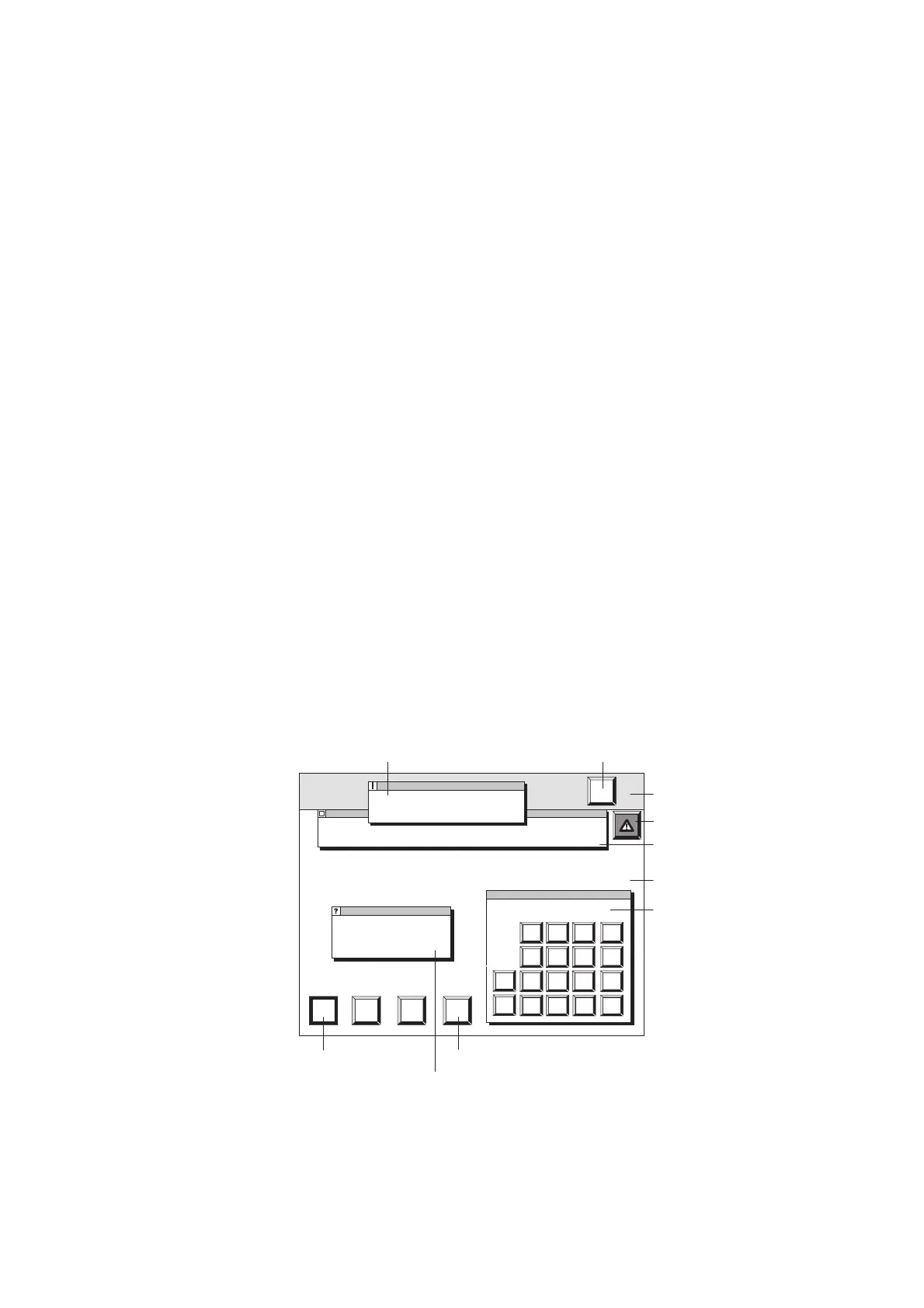